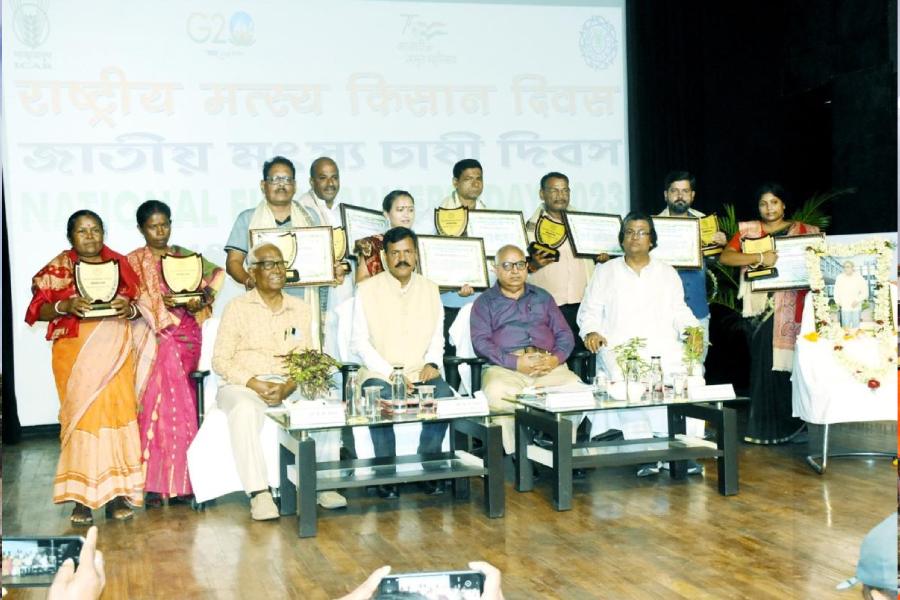A 60-year-old woman in a Sunderbans village struggled to meet the daily family expenses after her husband took ill six years ago.
In 2019, she took to fish farming in a pond in the backyard of her house. Now, she earns more than Rs 8,000 every six months by selling the produce.
“The money alone is not enough to run the family. But I don’t have to buy fish from the market. I also have a small parcel of land where I grow some vegetables that I can sell. The two sources of income help me eke out a living,” said Lakshmi Sardar, who lives in the interiors of Gosaba, around 90kms from the heart of Calcutta.
On Monday, Sardar was among 10 fish farmers from different parts of India who were felicitated by the Central Inland Fisheries Research Institute (CIFRI).
The Barrackpore-headquartered CIFRI works under the Indian Council of Agricultural Research. The institute has been supporting vulnerable communities with fish farming.
The felicitation was organised to celebrate National Fish Farmers’ Day.
All the 10 awardees — from Assam, Andhra Pradesh, Sikkim and Odisha, besides South 24-Parganas in Bengal — were helped by CIFRI in some way or the other.
“The primary goal of celebrating National Fish Farmers’ Day is to increase public awareness regarding the fisheries sector, its increasing growth and the technologies that are beneficial to the fishing sector,” said Basanta Kumar Das, director of CIFRI.
Sardar, one of four awardees from Bengal, had a year’s produce destroyed by saltwater inundation in the wake of Amphan in 2020. But she did not give up and is now yielding the dividends.
She rears Indian carp like rohu and catla.
The money earned through fish farming has helped her manage the family expenses and fund her daughters’ education.
For Girdhari Mukhiya of Sapaul district in Bihar, who was also felicitated on Monday, the assistance from CIFRI helped him grow his business.
Mukhiya, 70, owns 25 ponds that range from one to four acres. He has been in this business for 40 years. He underwent a training programme at CIFRI in 2007.
“Since 2017, my production has multiplied over five times. Last year, I produced around 800 tonnes of fish,” said Mukhiya, who buys around three lakh fishlings from the institute every year.
More than 2,000 people in and around the Sunderbans — Gosaba, Hingalganj, Kachukhali, Amtali, Gangasagar, Bali Island, Namkhana, Kakdwip and Kultali — have benefited from the assistance of the institute, said an official.
